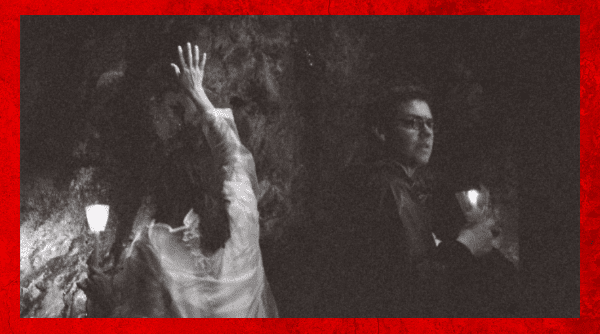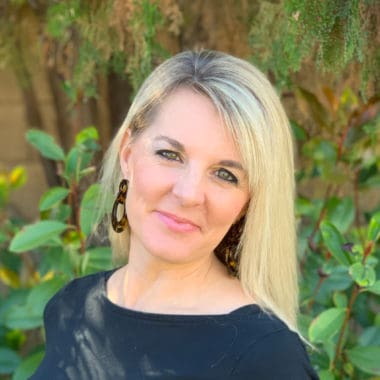This Present Paradise
A Series of Reflections on St. Elizabeth of the Trinity
(Start with part 1 here.)
“You belong to me.”
Chills went down my spine as I listened to a talk on spiritual warfare. The priest explained how the Eastern Church Fathers taught that at the hour of our death, we can expect the greatest temptation of our life. A temptation tailor-made for us, based on our sins and weaknesses. He reminded us that on her deathbed, even St. Thérèse had a momentary temptation to suicide because her physical suffering from tuberculosis was so great.
Satan’s last-ditch effort, he said, will be to remind us of our sins and say, “You belong to me.”
Almost immediately, though, as he went on talking, I imagined another voice in those final moments. A woman’s voice. A voice that with unmistakable authority would say: “No. She belongs to me.” And definitively send all evil away with a word.
Pray for us sinners now and at the hour of our death. We ask for it every time we say the Hail Mary.
But I was specifically thinking about my Marian Consecration. I was thinking of how, many times over the years, I had consecrated myself to Jesus through Our Lady, in effect saying “yes” to her assistance in helping me live out my baptismal promises to the very end, to fulfill my Christian vocation.
Jesus gave her to us at the Cross, but she, who said: “fiat” in complete freedom at the Annunciation and at the Cross (and many times in-between) also waits for our own “yes” and respects our free will. She stands with arms outstretched, waiting for us to run to her as a mother. Our consecration of ourselves to her is our falling into her embrace and saying, Yes, Mama. I am your child. Help me.
2017 was the 100th anniversary of the Fatima apparitions, and to honor Our Lady that year I took a large parish group through the 33 Days to Morning Glory consecration developed by Fr. Michael Gaitley. Our pastor came to speak one night during our preparation and reminded us of something striking. “You can consecrate anything to Mary that rightly belongs to you,” he said. “Your home, your business, your children, your marriage. I can consecrate this parish because of my authority as pastor. But I can’t consecrate the diocese—the bishop would have to do that. The Pope can consecrate the world.” (In fact, the bishop would consecrate our diocese that year in a packed cathedral—my family and I were pressed against the back wall, unable to see him crown the statue of Our Lady of Fatima, but it was exhilarating to be there nonetheless as a swell of people surged forward to receive scapulars from dozens of priests. Two years later, our pastor would consecrate our parish.)
This really got me thinking. What did belong to me that I could give to her?
This May, while searching for something in a drawer, I came across an old prayer journal. Picking it up, two slips of paper fell out and landed at my feet. I unfolded them and saw their significance: signed copies of the Marian Consecration my husband and I had made ten years before. I looked closer and realized in amazement that, in exactly one week, it would be the ten-year anniversary of that consecration. I knew we needed to renew it on the anniversary of that date. And so a week later we prayed, heads bent together, not only to surrender ourselves and our marriage to Mary but our family as well. The most precious thing we had, we gave her.
St. Elizabeth of the Trinity also had something that she treasured deeply.
She had her vocation.
She had already surrendered even that to the Will of God. For safekeeping, during very doubtful years, she tucked it into Mary’s hands. What else could she do?
She wrote a poem to Our Lady of Lourdes, confident in the power of her intercession.
“It is you who will have obtained for me…
The joy, at last of being his bride,
This title of which I am so jealous;
But may His will be mine!
Oh! that is what you must obtain for me!”
She believed it would be Mary who would obtain the permission of her earthly mother and give her the freedom to enter the convent. But, as we’ve seen before, in her deepening humility she begged that even more than Carmel, Mary would obtain for her the great grace of being utterly united with the will of God. After all, it was Our Lady alone who never wavered from God’s will.
And so in that sense, she gave something greater than her vocation to her Heavenly Mother: she handed over her will.
On February 2 of 1899, the Feast of the Presentation of the Lord, Elizabeth once again presented herself and her vocation to Mary. “On every Marian feast, I renew my consecration to the heavenly Mother…today I entrusted my future and my vocation to her. Yes, because Jesus doesn’t want me yet, His will be done, but I will grow holy in the world.”
Jesus doesn’t want me yet. When would her hour come?
Elizabeth must have remembered that in the Gospel (Jn 2:1-11) it is Mary who effectively decides the hour of Jesus’ beginning his public ministry with the miracle of Cana.
During the preparation for our parish consecration, we were discussing Cana and a woman’s hand shot up. She confessed that Christ’s words, “O woman, what have you to do with me? My hour has not yet come” sounded harsh and she really struggled in understanding his meaning.
But of course, Jesus was not being harsh with his mother. What he was asking was a question regarding the reality of his public ministry. What he was saying was are we really going to do this now? This isn’t supposed to be the time yet. Are you ready for this? Because you and I both know what this means. This will be the beginning of the end. And it will involve both of us. It has everything to do with you – and me.
Mary, who brought Him into the world, would accompany Him even unto His death, participating in His sacrifice in a way far beyond any other human being and therefore participating in our own salvation so profoundly that she would be called Co-Redemptrix.
When she says, with her words, “Do whatever He tells you,” she says that it IS time. The woman who brought him back from the Temple when he was twelve, who said then, in effect, no, it’s not time yet, now throws open to door to the rest of the story and walks through it with Him. And from that point on, every step they took together would be one step closer to the Cross. And they both knew it.
And so Elizabeth, in entrusting her vocation to the “Woman of the Hour” allowed Mary to decide if and when she would enter Carmel. She waited for Mary to speak into her mother’s heart “she has no wine” when Elizabeth was thirsting for the solitude of the convent. She knew that Our Lady would orchestrate everything perfectly as long as Elizabeth could be patient and “do whatever he tells you.” And, of course, she did. They both did.
Not two months after Elizabeth had handed over her vocation, the Blessed Mother handed it back to her.
In an astonishing concession, after Elizabeth’s sympathetic sister Guite had once again raised the subject with their mother about her older sister’s vocation, Madame Catez announced that Elizabeth would be allowed to enter Carmel after all. She would need to wait another two years, until she was twenty-one, but the permission was granted.
“Truly, it must be Mary who has gained this grace for me,” Elizabeth wrote in her journal later that day, probably still spinning at the sudden reversal. “O Mary, thank you, I am so moved, I can only say one word—merci.”
(Read part 14 here.)
Photograph of Lourdes by Ariel McKinney of Song of Songs Photography, used with permission.





